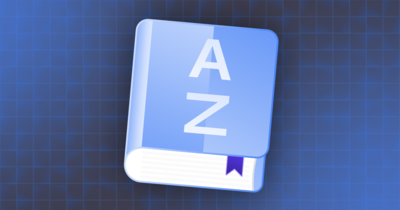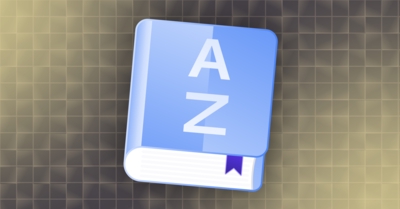Separation of duties (SoD), also sometimes referred to as segregation of duties, is the principle that no one person should be given a combination of privileges that would allow them to misuse a system on their own. SoD is often practiced in cybersecurity to combat insider threats as well as minimize the likelihood of errors when handling sensitive data.
In addition to being good practice, ensuring SoD is a legal requirement for publicly traded companies and their wholly owned subsidiaries, who are obligated to be compliant with the Sarbanes-Oxley act (commonly known as SOX). To maintain compliance with SOX, these organizations must undergo regular SOX audits and present evidence of responsible financial practices, including SoD, or face major legal ramifications.
SoD can be enforced by clearly defining conflicting roles and entitlements, and ensuring they cannot be carried out by the same individual. In addition, by identifying where your sensitive data resides and who has the ability to access, alter, and influence that data, you can establish effective internal controls for SoD.
Why is separation of duties important in cybersecurity?
There are several security benefits for using SoD controls within your organization. These include:
- Insider threats: SoD reduces the risk of fraud and data theft by preventing a single individual from having complete control over sensitive systems or data. As a result, SoD assists with risk mitigation when it comes to insider threats or employees looking to carry out fraudulent changes.
- Regulatory compliance: Many frameworks (e.g., SOX,HIPAA, PCI DSS) mandate segregation of duties as a compliance requirement to mitigate risks and protect sensitive information. By implementing SoD as a safety precaution, organizations can prevent a single person from having the ability to alter financial records or control certain actions which may result in compliance violations.
- Data integrity: By separating responsibilities, SoD helps prevent errors and unauthorized modifications to data, ensuring data security and preventing breaches. SoD ensures that the changes made to data sources are truthful and accurate.
- Accident prevention: Distributing tasks across different individuals decreases the risk of error and reduces the impact of data breaches or loss should a mistake occur.
- Mitigation of conflicts of interest: Conflicts of interest arise when a person has access to conflicting roles that may compromise objectivity and integrity. By separating these roles into incompatible duties, SoD can prevent such conflicts.
Separation of duties matrix
Implementing SoD can be challenging and often requires clear definition of roles, responsibilities, and the permissions associated with them. To handle this complexity, information technology (IT) teams often leverage a separation of duties matrix.
The matrix organizes user roles along the X-axis while also including the same roles on the Y-axis to clearly highlight vulnerabilities that may arise and how to resolve them. Through clearly defining access rights, roles, and responsibilities, the SoD matrix ensures that no single user has the permissions to execute more than one stage in a transaction workflow. This ensures accuracy in maintaining compliance, financial statements, and other critical processes.
Common struggles with enforcing separation of duties
While SoD is an effective, and in some cases necessary, security measure, putting it into practice can be challenging. Common struggles for IT teams include:
- Balancing security with efficiency: Separating duties can be crucial to preventing misuse of controls and insider threats. However, breaking down roles or critical tasks into different components can hinder employee efficiency—a trade off companies are often reluctant to make
- Higher associated costs: While SoD can help mitigate fraudulent financial transactions, it may also contribute to additional process complexity and require increased staff and higher operational costs. Prioritizing systems from most to least mission critical and implementing SoD over time can help keep associated costs in check.
- Employee count: For smaller organizations, SoD may seem not worth the effort because it requires multiple employees to perform tasks or sequences of events that could otherwise be completed by a single individual. Leveraging automation in combination with SoD is a great way to ensure employees can perform tasks efficiently while still securing business processes.
Key considerations when implementing separation of duties
Some IT and security practices you can execute to enforce effective SoD implementation are:
- Role based access controls (RBAC): This refers to the principle of only granting employees access to systems and information they need to effectively carry out their job function. By clearly defining role responsibilities and removing generic/birthright access, you can ensure no individual has unauthorized access across the full cycle.
- Time-based approvals: Implementingtime-based controls such as just-in-time (JIT) access for employee access to critical systems can ensure that individuals have real-time access to sensitive data for only the period they require it. In addition, having employees submit a log of what they need access for and designating another individual with the role of the approver allows you to maintain dual authorization and safeguard the integrity of your information.
- Regular risk assessments: Despite having previously identified critical systems and roles within the organization, it’s important to reassess risk at least annually. Any major organizational changes such as replacement of critical infrastructure, major employee count changes, and mergers and acquisitions can have an impact on security posture. By maintaining a dynamic process and consistently reviewing, identifying, and auditing cyber risks, you can safeguard critical processes and systems vital to the security of sensitive information.
- Automating controls: Consider implementing anidentity governance (IGA) solution to introduce automation foraccess controls involving mission-critical systems. This will allow you to limit certain activities based on predetermined rules. By doing so, you can limit the breach of SoD, even if someone attempts to bypass the established policies and security controls.
Separation of duties and access controls
Separation of duties (SoD) is a cybersecurity principle practiced by companies to mitigate risk, misuse, and fraud associated with critical systems. By dividing responsibilities among different employees, organizations can minimize error and detect process breaches more frequently.
SoD is just one component of effectively strengthening access management and control. Leveraging other methods such as well-defined and automated approval processes and frequentuser access reviews in tandem with SoD can ensure your company’s control systems are airtight.
To learn more about how ConductorOne can help your organization enforce separation of duties within your environment, check out our access conflicts functionality, or chat with us!



